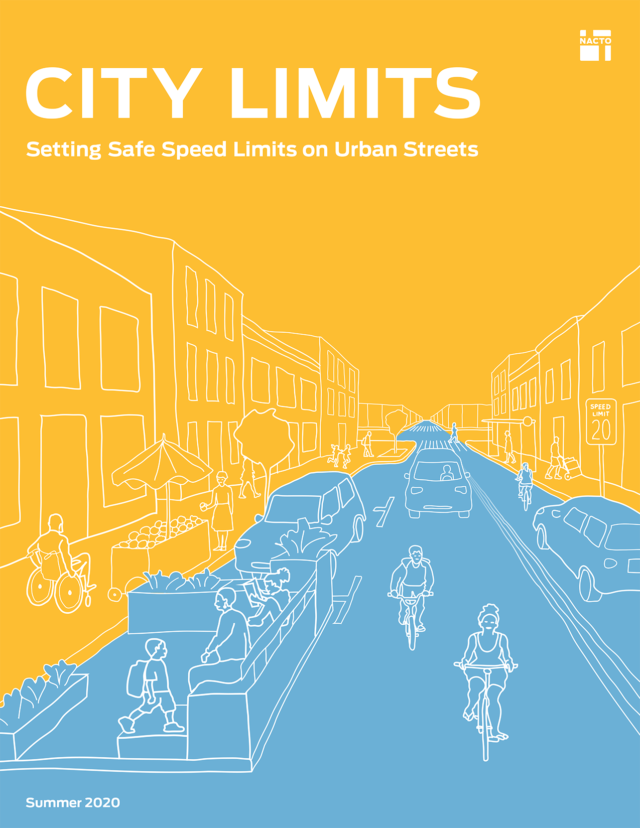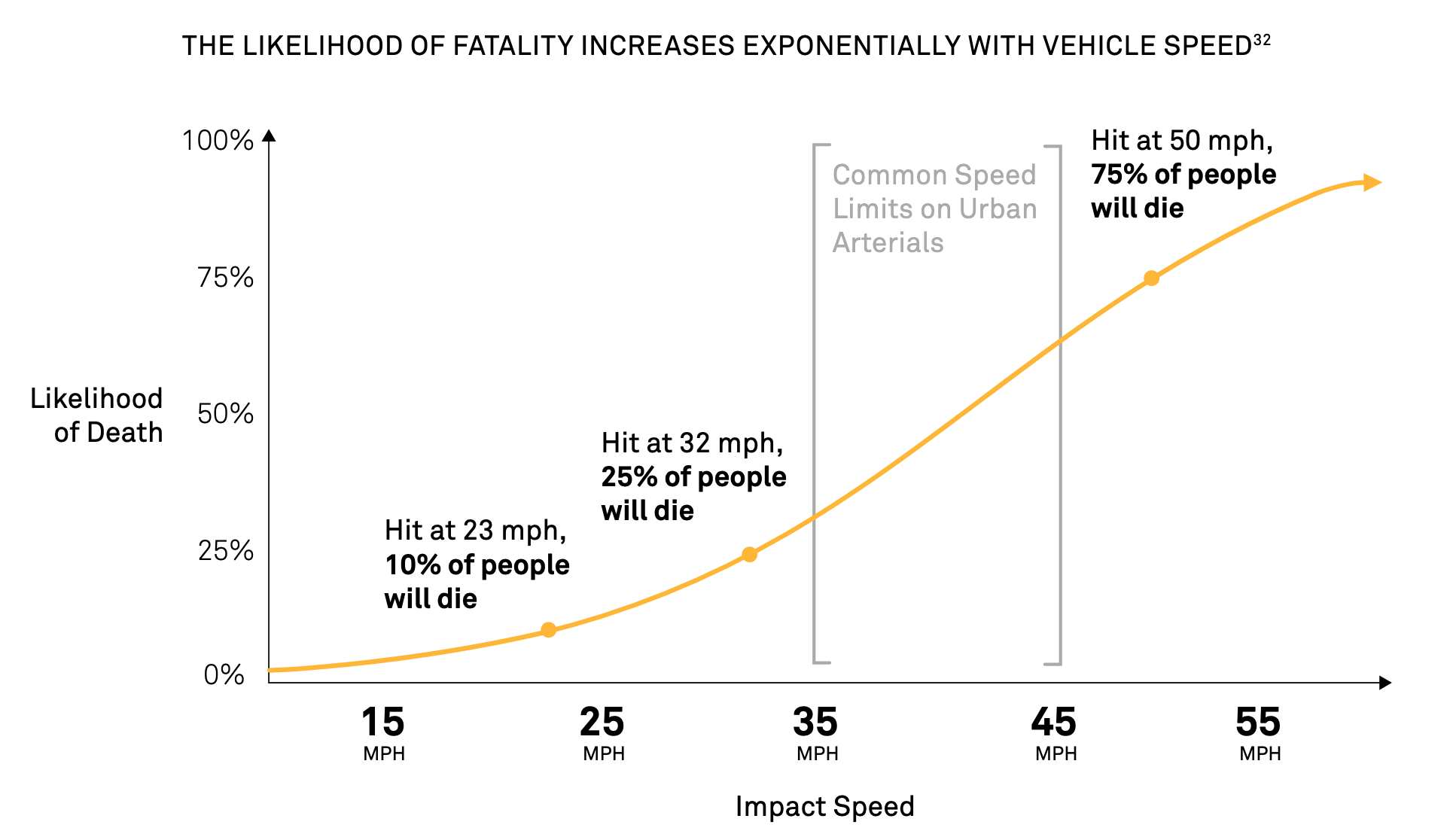 In 2020, NACTO published City Limits, the first-ever speed limit setting guidance that places safety as the top transportation priority. The guidance recommends using a context-sensitive approach to set speed limits in line with the maximum safe speed that drivers should be traveling on a given road, rather than based on how fast they are already traveling.
In 2020, NACTO published City Limits, the first-ever speed limit setting guidance that places safety as the top transportation priority. The guidance recommends using a context-sensitive approach to set speed limits in line with the maximum safe speed that drivers should be traveling on a given road, rather than based on how fast they are already traveling.
Recognizing that city authority to set speed limits varies by jurisdiction, City Limits offers three tools for setting speed limits on urban streets:
- Setting default speed limits on many streets at once.
- Designating slow zones in sensitive areas.
- Setting corridor speed limits on high-priority streets using a Safe Speed Study.
City Limits maps a new path for US cities, codifying speed limit setting best practices that have been tested and documented in cities across North America. Cities can create better and safer outcomes for all by adopting these speed limit setting practices as part of their traffic fatality reduction or Vision Zero programs. By managing speeds, cities can save lives.

Experience from other industrialized countries shows that fewer traffic deaths and safer roads are possible. City Limits encourages transportation leaders to take a Safe Systems approach focused on changing the policies and engineering decisions that create unsafe street conditions, rather than focusing on the behavior of individual road users.
Read the full report. >